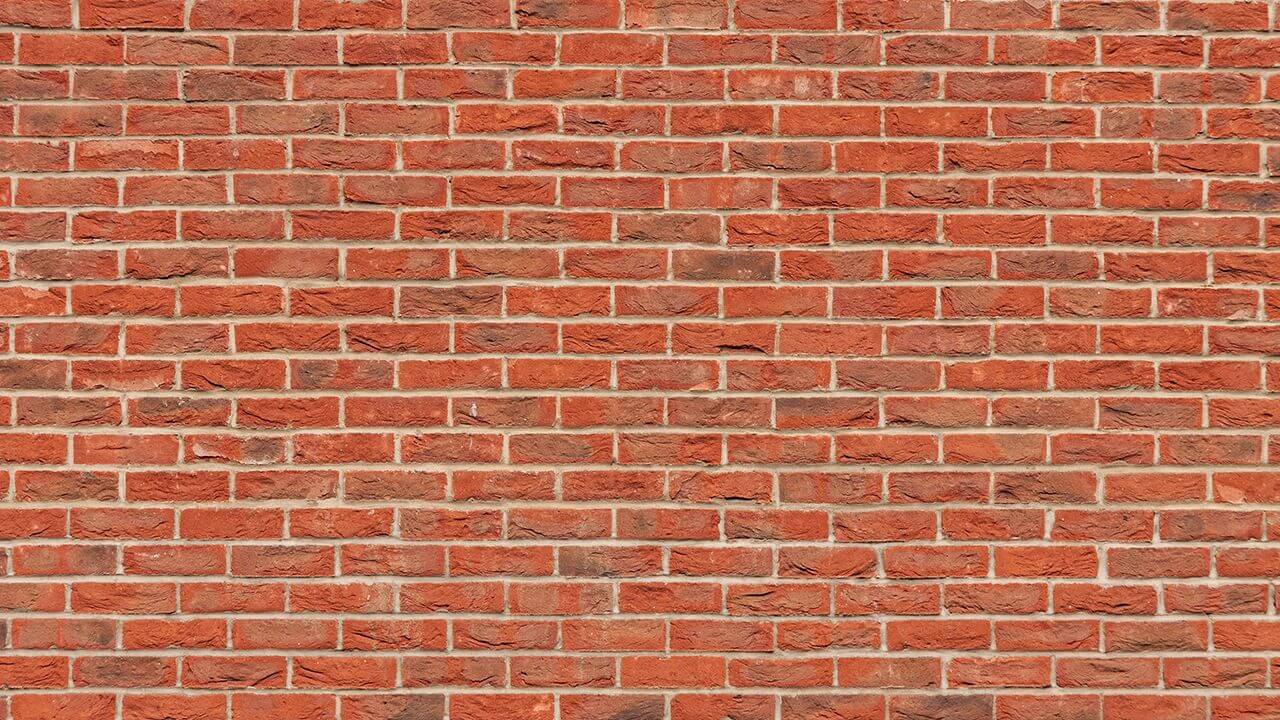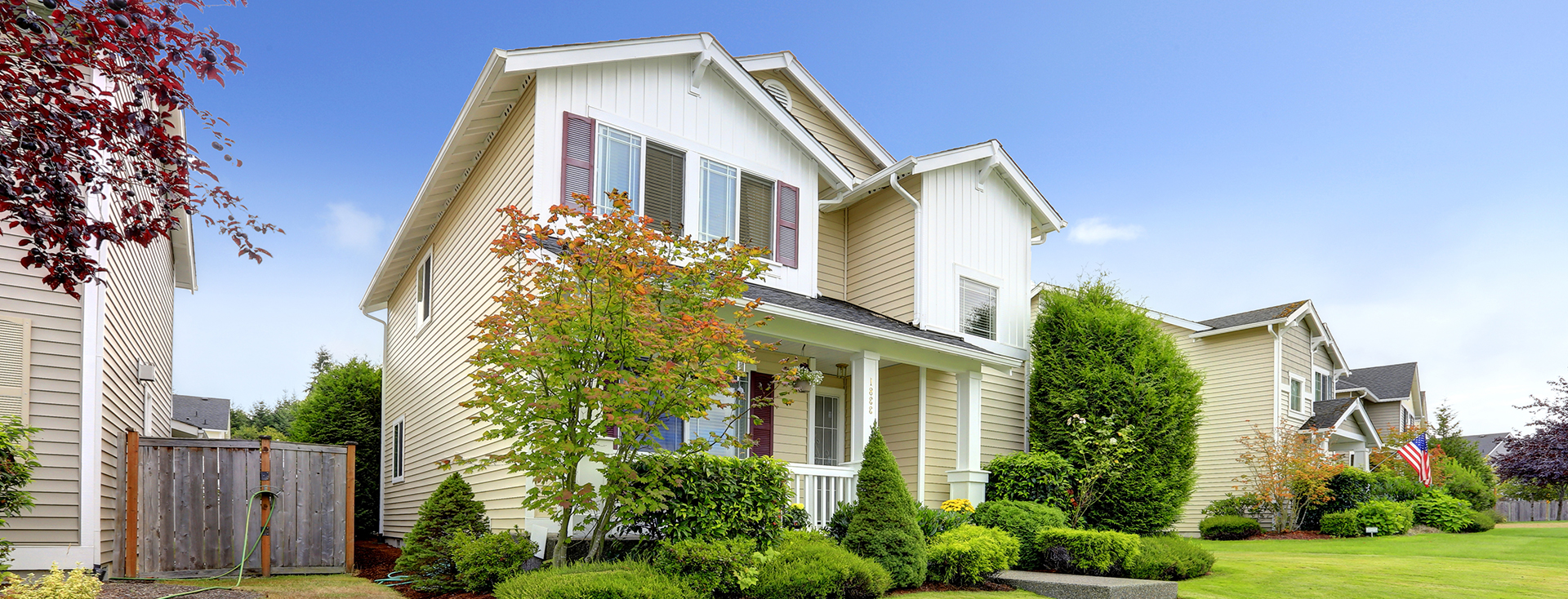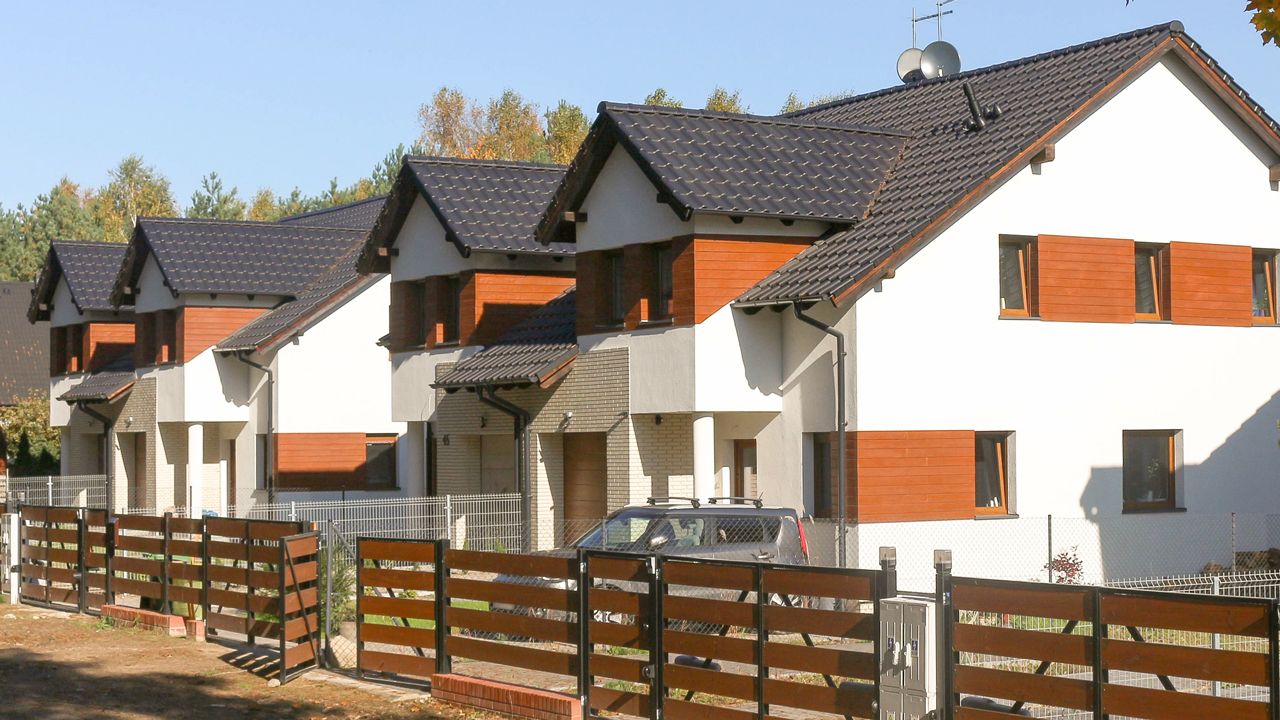Ventilated Facade
This term is used to refer to a type of external wall which contains an air gap beneath the outermost cladding. The minimum thickness of the gap is 2 cm. Air inlets may be evenly spaced or situated at the bottom or at the top of the wall. The structure of the external wall is self-supporting and at certain points anchored to the internal structure.
What do we gain with such a solution? Above all, it gives us more possibilities to arrange our facade — facade divisions do not depend on structural divisions. What is more, there is an enormous choice of facade products in the market. With PUR foam insulation, you can use almost each of those products: from large format fibre cement boards or troughed sheets to stone boards and ceramic cladding.
Thermal insulation of a building does not require a smooth surface or compression resistance. Building walls with ventilated air gap are less subject to dampening or freezing.
Closed-cell PUR foam is especially recommended because it is easy to apply such a facade (by spraying), it provides a very good thermal conductivity coefficient, it has low water absorption, and it can provide sealing around connection points — anchors going through the insulation layer.
Facade Made of Timber and Wood-based Materials
Facade is what makes your house stand out. Designers are more and more often choosing unconventional solutions when it comes to facades, departing from classic stucco. Timber and products imitating the appearance and structure of timber are willingly used by architects.
However, timber has some limitations. It is constantly “working” under the influence of weather conditions, thus changing its dimensions. An advantage, however, is that timber facades are in harmony with the environment.
Using natural timber boards or composite boards (a popular material for decks) or wood-based facade boards (e.g. HPL) for ventilated facade, you have the full freedom of design. You can arrange it in many directions: vertically, horizontally, at an angle, alternately. The only thing that limits you is your imagination.
Combining the advantages of both solutions, you can build a solid passive house with timber board facade, creating a perfect harmony with a forest environment, or a modern service or commercial facility with designer facade.
If you choose to make natural timber facade, you must be sure that the material is well-prepared and resistant to weather conditions occurring in our latitude. Therefore, you need panels made of Scandinavian pine, Siberian larch, or Canadian cedar, but — most of all — you must ensure regular repairs and maintenance.
Clinker Brick, Ceramic Tiles
 Clinker facade is always in fashion. It is a shame, however, that today, when thermal insulation has become so popular, many of such facades have been hidden behind Styrofoam. Facade made of this material is very durable and resistant to temperature changes. It also keeps its attractive appearance for long years — it does not lose its colour very easily and it is easy to clean.
Clinker facade is always in fashion. It is a shame, however, that today, when thermal insulation has become so popular, many of such facades have been hidden behind Styrofoam. Facade made of this material is very durable and resistant to temperature changes. It also keeps its attractive appearance for long years — it does not lose its colour very easily and it is easy to clean.
When it comes to ventilated facade with an air gap, we have two options: a traditional wall made of clinker brick and modern ceramic tiles (which are thinner, larger, and require special substructure — it is a more expensive solution).
When you choose a clinker brick, pay attention to a parameter called water absorption coefficient. The lower water absorption coefficient (close to 0%), the brick is more durable. Depending on your taste, you can choose from glazed or through-dyed products. It is worth investing in a high-quality product from a popular manufacturer so that your facade will keep its appearance for long years.
Good advice: if you decide to make clinker brick facade, plan it as early as at the stage of designing the building structure, because this facade material is quite heavy.
Cement Boards and Fibre Cement Boards
These materials are recommended if you want the building to look similar to stucco buildings (e.g. when you do not want the facade to differ much from the neighbouring buildings).
The boards may be fixed in a visible or non-visible way. The latter method requires denser substructure. Cement boards require stucco and painting (alternatively, you can install ceramic tiles imitating brick). On the other hand, fibre cement boards have finished surface. They are offered in various sizes. Compared to standard systems or stucco applied directly to insulating boards, such ventilated walls age better and are less subject to dampening and freezing.
American Siding, Troughed Sheet, and Corrugated Sheet
 The most economical solution for a ventilated wall is: a system of vinyl profiles, PVC (siding), or troughed or corrugated sheet. Such a system is quickly installed using quite large panels with processing-ready elements. The products are available in a wide colour range.
The most economical solution for a ventilated wall is: a system of vinyl profiles, PVC (siding), or troughed or corrugated sheet. Such a system is quickly installed using quite large panels with processing-ready elements. The products are available in a wide colour range.
The advantage of this solution is its universality and a low weight of the materials. Sidings, troughed or corrugated sheet are solutions ready to use in most circumstances. Panels are resistant to changeable weather conditions and protect insulation against dampening. Such a facade will prove useful when you cannot use heavy boards or in areas with frequent heavy rains.
Public Buildings — Stone Boards, Architectural Concrete, Steel and Aluminium Cladding, Decorative Panels Made of Plastic, Ceramic, Aluminium-Based Glass Panels
On the other side of the coin, there are very durable facades of representative buildings. On such structures, facades with ventilated air gap are most frequently installed. Why? Because separating the structure from the outermost layer brings only benefits: a possibility to change the cladding into a completely different solution in the future or to replace a single board without the need to repaint the entire facade. And what is most important — such a solution is lasting! Without much interference, a facade made of stone boards can last several dozen years in an unchanged condition.
Have you ever wondered what is beneath the facade of monumental, representative buildings? The same insulating material as in the case of a detached house. The same criteria apply to it — in many cases, the best insulating material is PUR foam.

 This website uses cookies. By using this website, you consent to the use of cookies in accordance with your browser settings.
This website uses cookies. By using this website, you consent to the use of cookies in accordance with your browser settings.